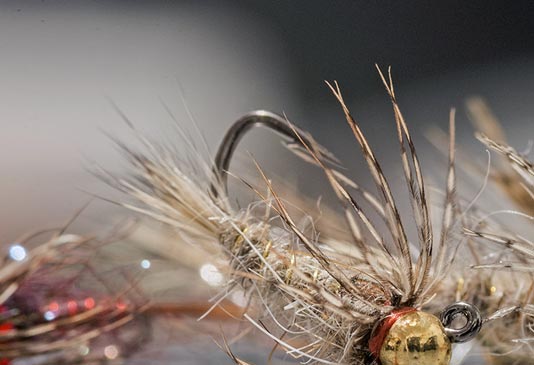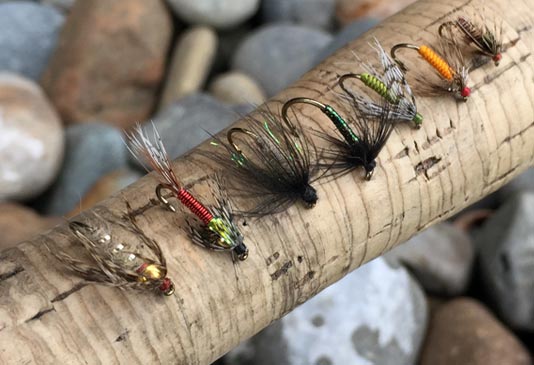Intro to Fishing Soft Hackles
Sean Visintainer - 10/28/15

An oldie but goodie.
Soft hackles flies and techniques have been around for quite some time. They are often some of the simplest styles of flies and the techniques used to fish them are really pretty straight forward. Despite being over shadowed by many of today's more modern flies, soft hackles are really excellent patterns for fishing caddis / mayfly emergences. They can also really be productive in situations when you have fickle, or heavily pressured fish feeding near the surface.
Why do soft hackles make good emergers? Let's discuss the way they are fished first. Traditionally soft hackles (or "softies" as they are called by hardcore soft hackle enthusiast) are fished in a swung fashion. The line is cast down-and-across, allowing the current to push, or swing, the line towards the bank. This "swinging" motion of the fly naturally imitates emerging caddis as they swim towards the surface to hatch. Now, most mayflies are not swimmers, meaning they drift to the surface rather than swim, although some species do swim to the surface to hatch. So when it comes to most mayfly hatches the softies can be fished either slower, or as a dropper under an adult and dead drifted. However, the swinging technique, especially when coupled with a twitch or strip, does imitate the struggling mayfly nymph trying to emerge from it's shuck.
The soft hackles appearance is also a big reason as to why they can work so well. Slim profiles, that are impressionistic and have natural movements. Most soft hackles are not heavily dressed and stiff. They flow in the current and mimic the legs, antenna, wings, etc all in a subtle fashion as to not over emphasis anyone one thing in particular other than movement.

Example soft hackle flies available at the shop.
Pointers for soft hackle techniques:
- Vary the swing style. Sometimes a steady, constant swing is on the menu. Sometimes a strip or twitch of the rod trip does the trick. Sometimes all of the above.
- Try different swing rates. A mend can either slow down, or conversely speed up the fly whichever you choose to do. Sometimes slow and steady wins the race, sometimes fast is where it's at.
- A double soft hackle rig can speed up which style they prefer. I like a lead soft hackle to be bigger and usually have a little weight like bead or wire ribbing in the body.
- Aggressive takes on a tight line can cause you to break off flies with aggressive hook-sets. Remember your line is tight so set the hook accordingly.
- Swinging them ain't working? Try dead drifting under a dry.
- Fish them deep on indicator rigs if fish are not feeding near the surface. They work great as the "dropper" nymph trailing behind something bigger/heavier. Swing on the end of the drift to mimic a emerging insect. Often times the take will be as the fly swings up off the bottom.
- Can be fished throughout most of the season when insects are active, spring through fall.
- When swinging soft hackles, look for broad or even currents to get a consistent swing.
- Shallow riffles up to 4' deep or so often work best. That is not the rule though... there are no rules, it's fishing.
- Watch the video :)
